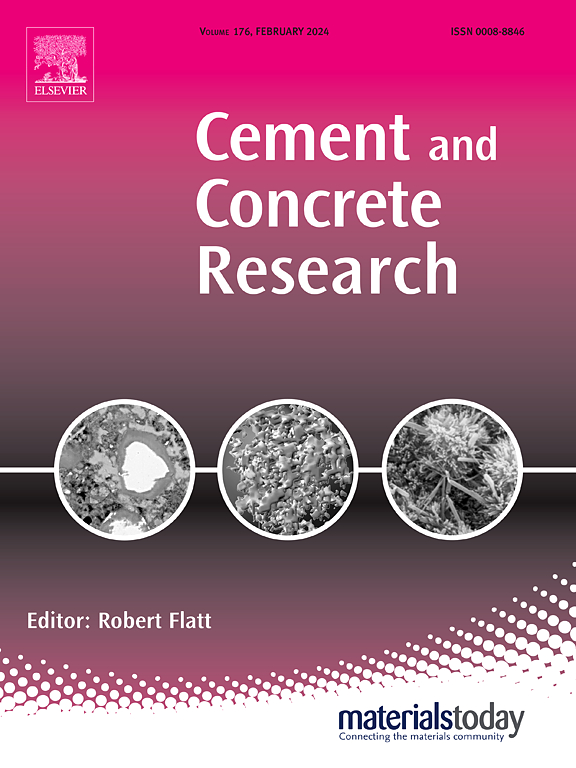Fiber alignment mechanism in 3D-printed ultra-high performance concrete based on fluid dynamics theory
IF 13.1
1区 工程技术
Q1 CONSTRUCTION & BUILDING TECHNOLOGY
引用次数: 0
Abstract
This paper aims to clarify fiber orientation mechanism in 3D printed ultra-high performance concrete (3DP-UHPC) within a shear flow field. Firstly, the internal flow field characteristics of 3DP-UHPC were examined under various rheological parameters and extrusion speeds. Furthermore, velocity distribution patterns of 3DP-UHPC in nozzle were analyzed by fluid dynamic theory. The fiber orientation in 3DP-UHPC was investigated by X-ray computed tomography technology (X-CT) to validate the prediction model. Results indicate that the flow field in 3DP-UHPC comprises two distinct zones: a low-velocity gradient plug flow region, which minimally impacts fiber rotation, and a high-velocity gradient shear flow region which significantly affects fiber alignment. By reducing the viscosity of UHPC and increasing the extrusion speed, the velocity gradients in both zones are enhanced, optimizing fiber alignment in the printing direction. Based on the Jeffery equation, the velocity gradient coefficient is introduced to establish the relationship between velocity gradient and fiber rotation angle in different nozzle areas, thereby refining the previously proposed fiber orientation prediction model, and effectively controlling the relative error of fiber orientation coefficient to within 6 %.
基于流体力学理论的3d打印超高性能混凝土纤维取向机理
本文旨在阐明剪切流场下3D打印超高性能混凝土(3D - uhpc)纤维取向机理。首先,研究了不同流变参数和挤出速度下3d - uhpc的内部流场特性。利用流体动力学理论分析了3d - uhpc在喷嘴内的速度分布规律。利用x射线计算机断层扫描技术(X-CT)对3d - uhpc中的纤维取向进行了研究,以验证预测模型。结果表明,3d - uhpc中的流场包括两个不同的区域:低速梯度塞流区,对纤维旋转影响最小;高速梯度剪切流区,对纤维排列影响显著。通过降低UHPC的粘度和提高挤出速度,增强了这两个区域的速度梯度,优化了纤维在打印方向上的排列。在Jeffery方程的基础上,引入速度梯度系数,建立了速度梯度与不同喷嘴区域纤维转角之间的关系,从而对之前提出的纤维取向预测模型进行了细化,有效地将纤维取向系数的相对误差控制在6%以内。
本文章由计算机程序翻译,如有差异,请以英文原文为准。
求助全文
约1分钟内获得全文
求助全文
来源期刊

Cement and Concrete Research
工程技术-材料科学:综合
CiteScore
20.90
自引率
12.30%
发文量
318
审稿时长
53 days
期刊介绍:
Cement and Concrete Research is dedicated to publishing top-notch research on the materials science and engineering of cement, cement composites, mortars, concrete, and related materials incorporating cement or other mineral binders. The journal prioritizes reporting significant findings in research on the properties and performance of cementitious materials. It also covers novel experimental techniques, the latest analytical and modeling methods, examination and diagnosis of actual cement and concrete structures, and the exploration of potential improvements in materials.
 求助内容:
求助内容: 应助结果提醒方式:
应助结果提醒方式:


